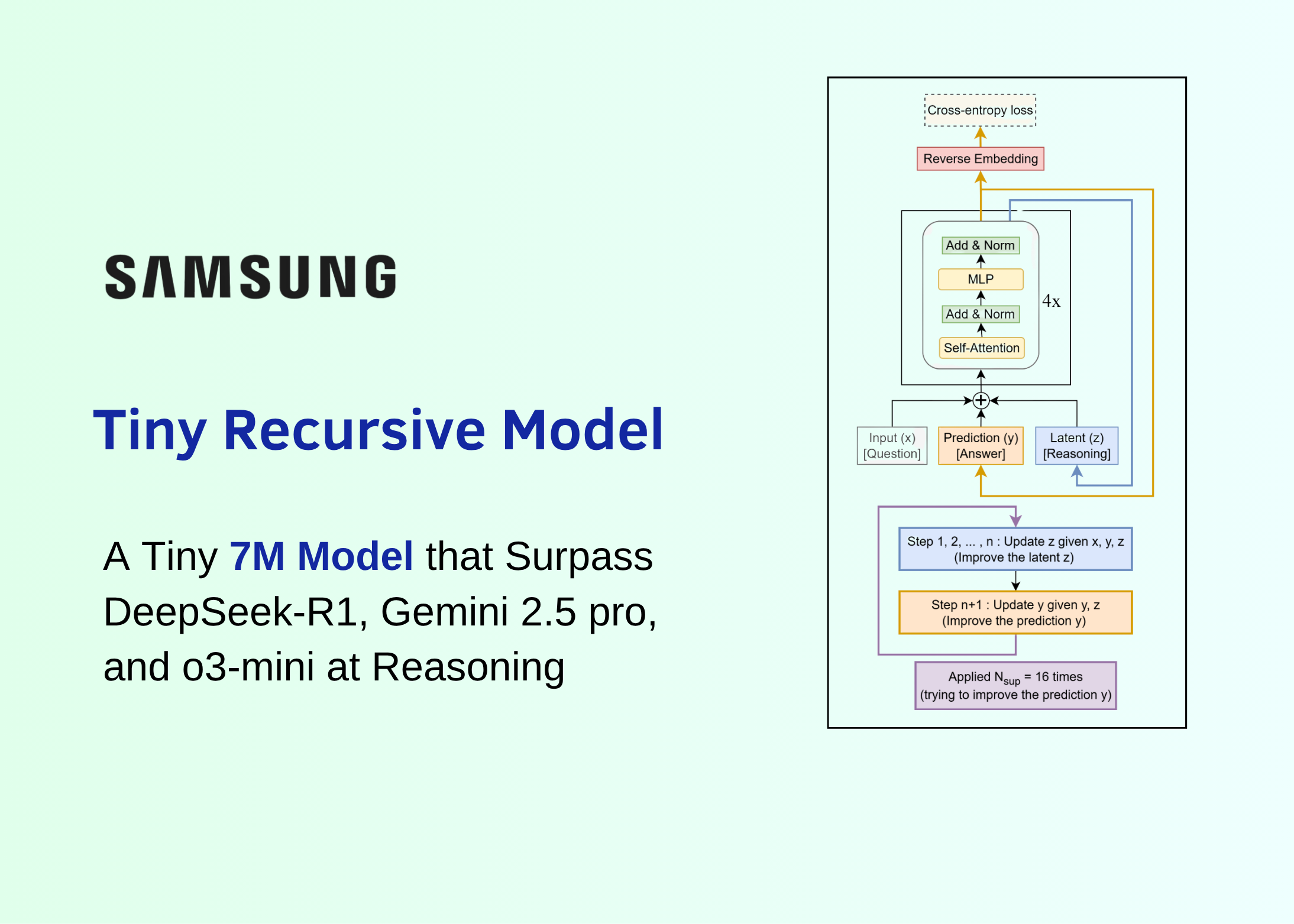
Samsung's Tiny Recursive Model Surpasses Larger Competitors in AI Reasoning
In a significant advancement in artificial intelligence, Samsung SAIT (Montreal) has unveiled the Tiny Recursive Model (TRM), a groundbreaking two-layer recursive reasoner with approximately 7 million parameters. This innovative model has demonstrated remarkable performance, achieving test accuracies of 44.6% to 45% on the ARC-AGI-1 benchmark and 7.8% to 8% on ARC-AGI-2, outpacing larger autoregressive language models such as DeepSeek-R1, Gemini 2.5 Pro, and o3-mini-high.
Key Highlights of TRM
- Compact Size: At around 7 million parameters, TRM is significantly smaller than its competitors, yet it delivers superior reasoning capabilities.
- Performance on Benchmark Tests: TRM excelled in puzzle benchmarks, achieving scores of 87.4% on Sudoku-Extreme and 85.3% on Maze-Hard, surpassing the previous Hierarchical Reasoning Model (HRM), which had 27 million parameters.
- Innovative Architecture: The model simplifies the architecture by removing the two-module hierarchy of HRM and instead utilizes a single recurrent core that processes a latent scratchpad and a current solution embedding.
According to Asif Razzaq from MarkTechPost, TRM's design enables it to refine its reasoning through iterative updates to its latent scratchpad, enhancing its problem-solving capabilities without the complexity of larger models. This technique allows TRM to alternate between thinking and acting effectively, demonstrating a promising approach to AI reasoning.
Implications for AI Development
The introduction of TRM marks a pivotal moment in the ongoing evolution of AI technologies, particularly in the realm of reasoning and problem-solving. As larger models often require extensive resources and complex training regimes, TRM’s efficiency could democratize access to advanced AI capabilities, making it feasible for a broader range of applications.
This development not only showcases the potential of smaller models in achieving high performance but also raises questions about the future direction of AI research and the trade-offs between model size and effectiveness.
Rocket Commentary
Samsung SAIT's unveiling of the Tiny Recursive Model (TRM) marks a significant breakthrough in the pursuit of efficient AI. With only 7 million parameters, TRM challenges the notion that size equates to capability, achieving impressive benchmark results that outstrip larger models. This advancement underscores a pivotal opportunity for the industry: the push for more accessible AI solutions that prioritize efficiency without sacrificing performance. However, as we celebrate these technological strides, it is crucial to remain vigilant about the ethical implications of deploying such models. Ensuring that AI remains a tool for transformative change, rather than a source of inequality, will be essential as smaller, high-performing models like TRM gain traction in various applications across business and development sectors.
Read the Original Article
This summary was created from the original article. Click below to read the full story from the source.
Read Original Article